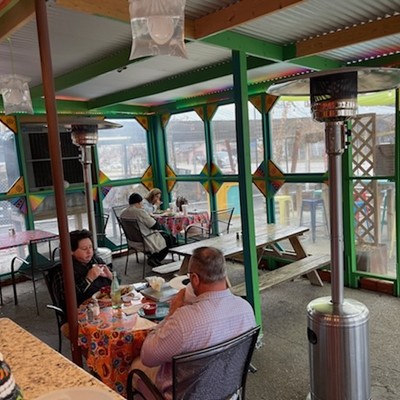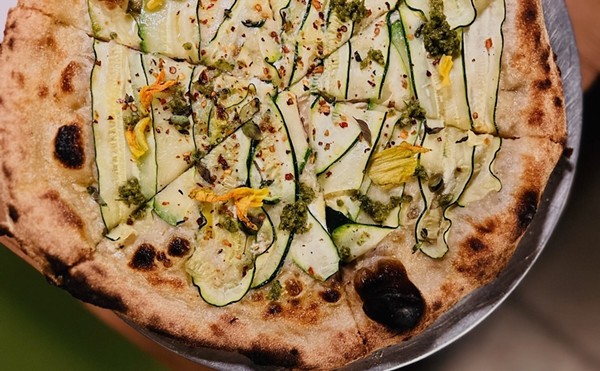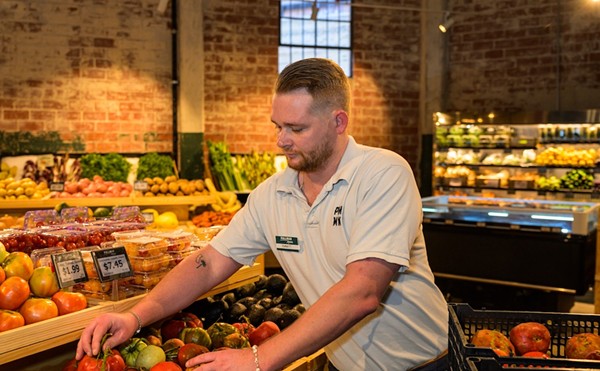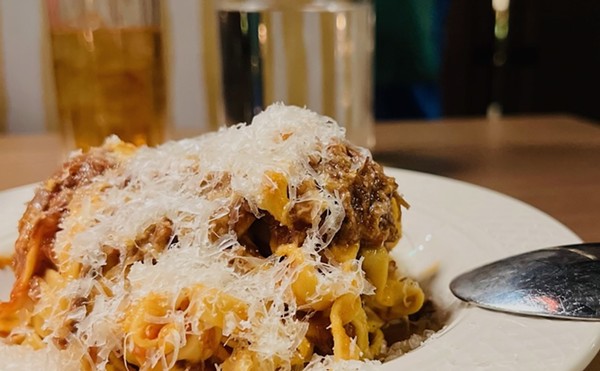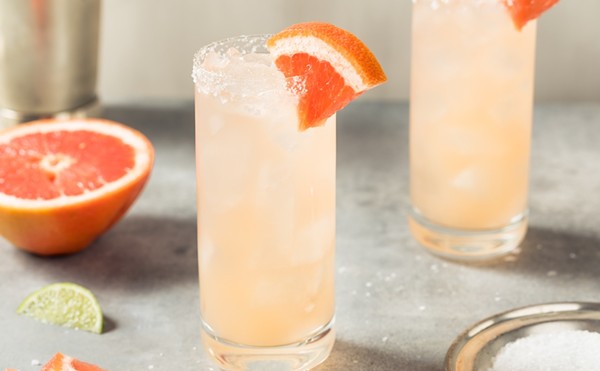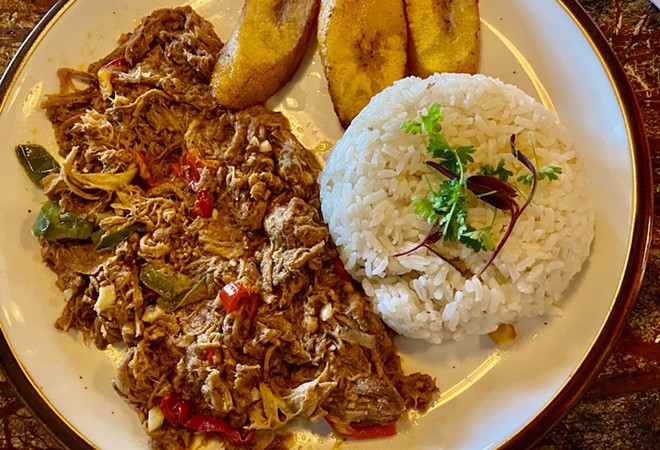
In the period of deprivation that followed, Cuba’s enterprising cooks kept body and soul together by opening informal restaurants in their own homes, utilizing what products they could muster. One home economist even suggested making use of previously discarded items such as banana peels.
There are no banana peels to be found on the menu at San Antonio’s Paladar, though plantains abound, nor is there even the slightest whiff of underground improvisation. Though there’s a small wall of faux ferns, the otherwise polite, grey-toned space speaks neither of shabbily historic Havana nor of the vibrant Mexico whose cuisine gets equal billing in this two-country co-habitation.
Think of the space as a neutral background for two mas alegre culinary traditions and their fusion offspring.
Given that the Mexican side of this equation is more familiar to most of us, I’m forgiving myself for concentrating on the Caribbean and fusion segments of the menu. No matter how well executed, chicken enchiladas weren’t high on my must-try list. Even so, the staff indicated that the arroz cremoso with chipotle and chicken bites was a risotto-style pure invention with Mexican roots, so maybe that’s worth a look.
Paladar’s crisply fried flautas de lechon are pretty much straight Mexican, though they apparently landed in the “fusion” column due to their filling of suckling pig in lieu of the more common chicken. I can’t say puerco was an improvement, but neither is it a mistake. The meat’s inherently mild flavor was helped along by toppings of mixed greens and queso fresco along with a side of sweet fried plantains. Be warned, though, that the accompanying salsa verde is practically puro chile, so apply con cuidado.
Paladar’s appetizer column is pretty much all invention or fusion. Guacamole comes with fried pork chunks, tostones rellenos are tiny plantain bowls filled with marinated tuna. One of the more interesting items on this menu turned out to be tuna salvaje, which features briefly seared slices of the meaty fish atop thinly laminated mango. Microgreens, a few avocado chunks and a scattering of black and white sesame seeds topped the assemblage. While a dressing was a fine way to finish off the dish, just not this ponzu. Or not so much of it. Usually a balanced blend of soy with citrus, soy, vinegar and more, the Japanese condiment used here was so tart, so soy-heavy that it all but obliterated the delicate tuna and the sweetly perfumed mango.
The Paladar people can’t help inventing, even when it comes to the theoretically classic, Cuban side of the menu.
By the restaurant’s own admission, the menu’s ceviche tropical with red snapper, kiwi and mango isn’t really a thing in Cuba, having been borrowed primarily from Peru. But ropa vieja, or “old rags,” is straight-up traditional. To make it, cooks boil beef — usually flank — for hours with onion, garlic and bay. The meat is then shredded, sautéed with onion and bell pepper and enhanced with a little reserved broth from the boil. It’s a simple but beautiful dish, and Paladar does it perfectly with white rice and sautéed plantain as sides.
The combination of black beans and rice in Cuba is frequently called Moros y Cristianos in reference to the less historically happy mix of Moors and Christians. Congri, on the other hand, is often made with red beans. In keeping with the theme of invention, Paladar’s version uses black beans and a little red bell pepper, which would be great on its own. But it’s also traditional to top the dish with fried chunks of pork, and that’s how it’s done here. The pork was just sizzled and salty enough to be a perfect partner.
Because I’m a sucker for yuca in most of its forms I also added an order of yuca al mojo. Wow. On its own the starchy tuber is pretty bland. But boiled, lightly fried and literally drenched in chunks of unapologetically pungent garlic, the side overshadowed the main. In a good way. I recommend taming it a tad with an equally robust bottle of malta, a molasses-dark non-alcoholic malted grain beverage common throughout the Caribbean.
Then, if you have just a little room left, you might exit with some delicate guava- and cheese-filled pastries made for Paladar by “a lady” apparently not in employ of the restaurant’s kitchen. An accompanying Cuban coffee would satisfy any longing cultural desires in that department.
Subscribe to SA Current newsletters.
Follow us: Apple News | Google News | NewsBreak | Reddit | Instagram | Facebook | Twitter| Or sign up for our RSS Feed




